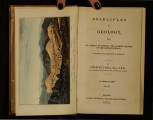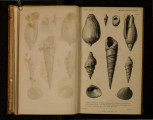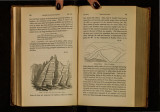| OCR Text |
Show • 22 NEWEST TERTlARY STRA1'A• [Ch.II. remains which characterize each of the three successive periods above alluded to, approximate more nearly to the assemblage of species now existing, in proportion as their oriO'in is less remote from our own era, or, in other words, the b recent species are always more numerous, and the extinct more rare, in proportion to the low antiquity of the formation. But the discordance between the state of the organic world indicated by the fossils of the Subapennine beds and the actual state of things is still considerable, and we naturally ask, are there no monuments of an intervening period ?-no evidences of a gradual passage from one condition of the animate creation to that which now prevails, and which differs so widely? It will appear in the sequel, that such monuments are not wanting, and that there arc marine strata entering into the composition of extensive districts, and of hills of no trifling height, which contain the exuvire of testacea and zoophytes, hardly distinguishable, as a group, from those now peopling the neighbouring seas. Thus the line of demarcation between the actual period and that immediately antecedent, is quite evanescent, and the newest members of the tertiary series will be often found to blend with the formations of the historical era. In Europe, these modern strata have been found in the district around Naples, in the territory of Otranto and Calabria, and more particularly in the island of Sicily; and the bare enumeration of these localities cannot fail to remind the reader, that they belong to regions where the volcano and the earthquake are now active, and where we might have anticipated the discovery of emphatic proofs, that the conversion of sea into land had been of frequent occurrence at very modern periods. ( 2:l ) CHAPTER III. Different circumstances under which the secondary and tertiary formations may have originated-Secondary series formed when the ocean prevailed: Tertiary during the conversion of sea .into land, and the growth of a continent-Origia of interruption in the sequence of formations-The areas wllere new deposits take place are always varying-Causes which occasion this transference of the places of sedimentary deposition-Denudation augments the discordance in age of rocks in contact-Unconfot·mability of overlying formations-In what manner the shifting of the areas of sedimentary deposition may combine with the gradual extinction and introduction of species to produce a series of deposits having distinct mineral and organic characters. DIFFERENT CIRCUMSTANCES UNDER WHICH THE SECONDARY AND TERTIARY FORMATIONS MAY HAVE ORIGINATED. WE have already glanced at the origin of some of the principal points of difference in the characters of the primary and secondary rocks, and may now briefly consider the relation in which the secondary stand to the tertiary, and the causes of that succession of tertiary formations described in the last chapter. It is evident that large parts of Europe were simultaneously submerged beneath the sea when different portions of the secon~ dary series were formed, because we find homogeneous mineral masses, including the remains of marine animals, referrible to the secondary period, extending over great areas; whereas the detached and isolated position of tertiary groups, in basin or defressions bounded by secondary and primary rocks, favours the hypothesis of a sea interrupted by extensive tracts of dry laRd. State of the Surface when the Seconda·ry Strata we1·e formed. Let us consider the changes that must be expected to accompany the gradual conversion of part of the bed of an ocean into a continent, and the different characters that mi$ht be imparted |






























































































































































































































































































